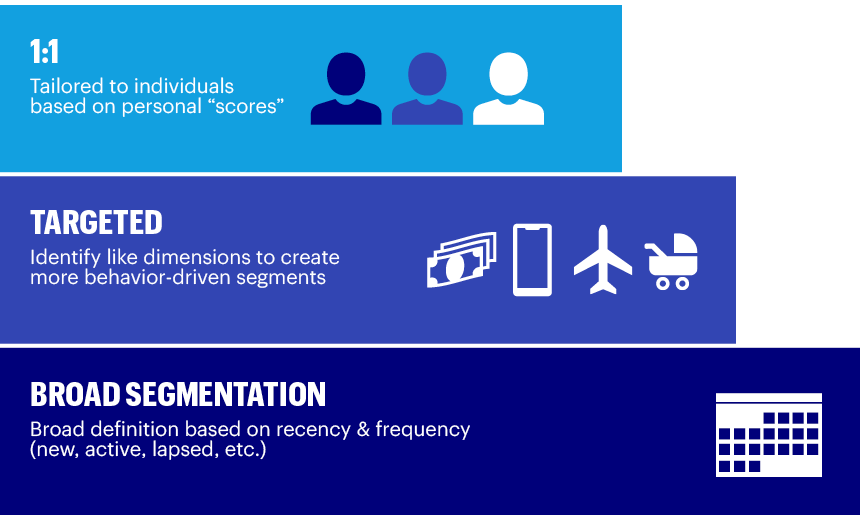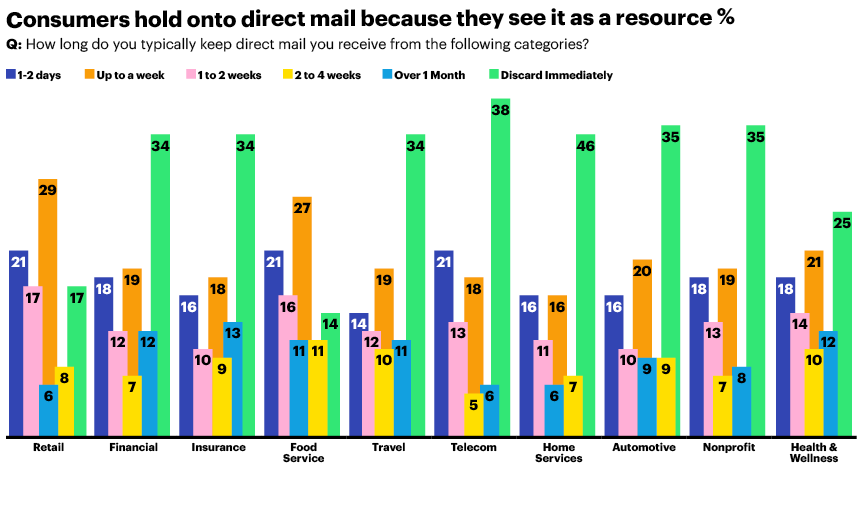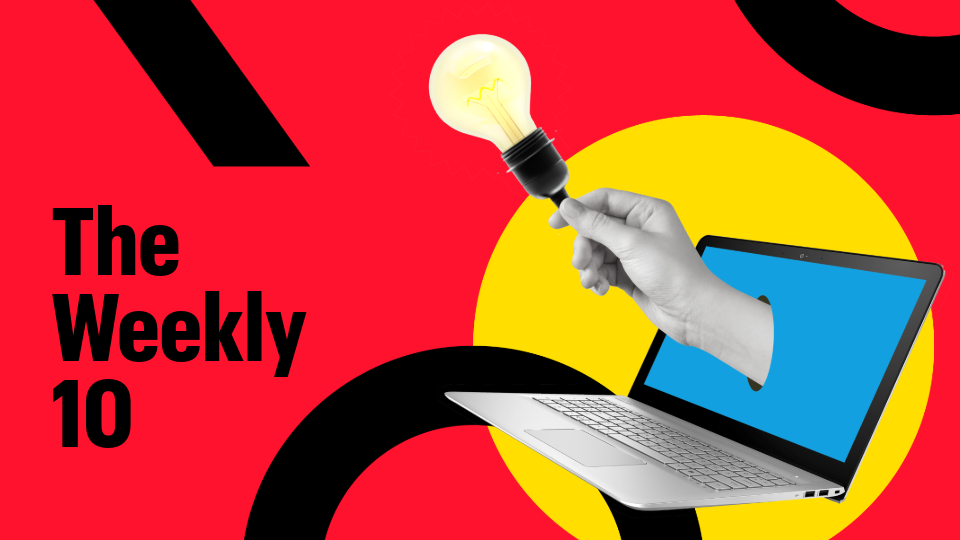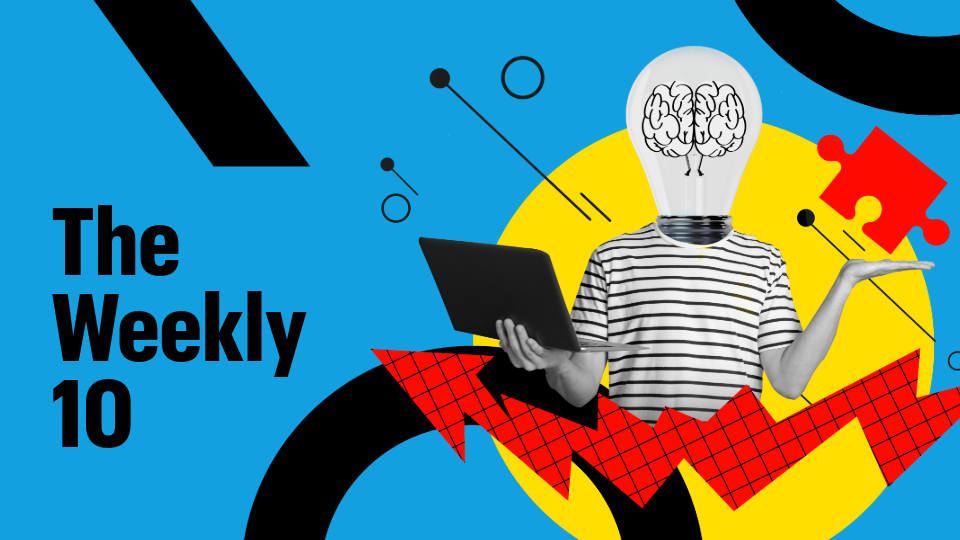The Harvard Business Review hailed customer experiences as the next competitive battleground for brands back in 1998, and the pressure on B2C marketers to personalize consumer engagement has only increased in the years since — along with the complexity of what personalization entails.
Today, personalization encompasses reaching the right audience (based on attitudes, behaviors, demographics) with the right message (offer, imagery, design) in the right channel (offline, online, performance, traditional) at the right time (seasonal; life-stage; and lifecycle, such as loyal customer, lapsed, etc.). Many moving pieces are involved in putting together that journey.
"Getting there requires advanced data and automation capabilities, collaborative teams and a curated ecosystem of partners and platforms — all focused on understanding and serving the personalized experiences that are valuable to leads and customers," noted Deloitte Managing Director Leala Shah Crawford in the consulting firm's recent report on the issue. "It's about prioritizing trust and engagement over transactions and targeting."
The payoff to all that work is significant in terms of both consumer loyalty and revenue.
McKinsey reported that one healthcare provider's aggressive testing to personalize communications to different consumer segments resulted in a 0.15% increase in the conversion rate, which translated into $2.4 million in scaled revenue impact.
47% of U.S. companies with "high-personalization maturity" surveyed by Deloitte for its report exceeded their annual revenue goals compared to just 24% of brands with low personalization maturity. (Deloitte defines brands with high-personalization maturity as those with strong capabilities in customer data management; AI and machine learning for prediction and dynamic optimization; real-time omnichannel engagement; and cross-functional collaboration.)
High-personalization maturity companies reported more than 1.5X the improvement in revenue per customer vs. companies with low personalization maturity capabilities, Deloitte found.
Deloitte also reported nearly 2X the improvement in customer engagement and more than 1.5X the improvement in customer loyalty compared to companies with low-personalization maturity.
Getting there

Brands' personalization journey
Brands can build their personalization capabilities in stages. Before that process begins, however, marketers should determine what their goal is for personalization, says Elizabeth Fowler, a director of analytics at Quad. "You need to have a strategy for what you're trying to personalize — what's your goal? Are you trying to upsell? Do you want to prompt customers about things they might be ready to purchase again? Are you introducing a new line?"
Know your audience
Once you set your goal, the first step in building personalization capabilities is to know your audience. Brands today can't afford to not know their customers, contends John Puterbaugh, Vice President of Advanced Innovation & Media at Quad, pointing to recent controversies involving promotions that landed wrong and hurt sales.
"As marketers, we assume we know about our audience, and we have the stories we want to tell them, but then there's the audience themselves and what they really think of those stories," Puterbaugh notes. "The stakes are high."
Truly knowing your audience means doing more than simply identifying audience attributes (age, gender, income, education, geography) to understanding what those consumers prefer within marketing communications. What content do they want? When do they want to receive it? How (in what channel) do they want to receive it?
Understanding through data organization
This understanding stems from data — organizing, analyzing and parsing it to group customers by shared characteristics. Basic segmenting involves recency, frequency and monetary value (RFM) of past transactions plus basic demographics.
More sophisticated groupings use additional data and analysis to bring in values, interests, hobbies and passions. Quad is able to understand the latter with its Mailbox Insights tool, which looks at the mail a household receives (magazines, catalogs, etc.) and assigns some of 150 discrete passions to that household. One household's passions, for example, might include home goods, beauty, parenting, woodworking, tools & hardware, and fishing.
Digging deeper, marketers can do custom segmentation and scoring of consumers according to sociodynamic profiles or personas, as well as propensity modeling, which analyzes behavioral data to predict future behaviors.
Machine learning and artificial intelligence (AI) have long been part of this level of customer segmentation, scoring and modeling. Brands can expect AI to become increasingly critical to customer engagement, moving from descriptive analytics to both predictive and prescriptive analytics — predicting future trends/events and determining the best way forward.
Does the effort involved in segmentation pay off? One Quad client, a beauty and personal care retailer with an already successful loyalty direct mail program, decided to find out. For a recent holiday savings loyalty mailing, the brand sectioned off a portion of its mail file and grouped it into 15 audience segments, with each segment receiving a catalog featuring a unique set of products. Another group of customers received catalogs featuring products pulled from the retailer's recommendation engine. The segmented mailing delivered significantly better sales.
Tailor offers & creative
As brands build more knowledge of their customers, they can tailor both the offers and creative elements (imagery, layout, featured products, etc.) to specific segments. For example, some consumers may prefer lots of product details plus practical application photos. Others may like aspirational lifestyle photos more than product images, and so on.
Data-driven tools such as Quad's Accelerated Marketing Insights virtual testing platform can help marketers determine which combination of offer and creative will resonate best with each audience segment, isolate individual variables' performance and leverage learnings for cross-channel integration. Testing before going to market also helps predict response rates, enabling marketers to decide if the lift in response/revenue justifies the investment in personalization.
Use cross-channel touchpoints

Choosing the right channel, or the right combination of channels, is another important aspect of personalization. Channels have different strengths, so coordinating communications across channels delivers the best response. For example, 75% of consumers can recall a brand after receiving a piece of direct mail compared to only 44% after receiving a digital ad, and consumers hold onto mail, making it a valuable addition to direct marketing campaigns.
Another very effective element is to use 1:1 Flowcodes — a Flowcode unique to each consumer — in print communications that send individuals to customized digital content. (Flowcode, a Quad partner, is an advanced QR code platform.) Flowcodes help marketers understand their customers, noted Quad's Puterbaugh. They can be used to gather more information for your customer database.
"A key part of understanding audiences is to look at the actions they take — where they spend their time, where they spend their money, etc. Scanning a QR code is a specific action that shows intent, typically top-of-the-funnel intent, and often correlates to high conversion rates," he explained. "Having 1:1 Flowcodes allows marketers to associate actions/interests with specific households on a mailing list."
The offline piece can also be tailored to individual customers.
Often, generating content at scale can be a barrier to moving to more personalized direct marketing. One way to deal with this is to leverage technology that enables the dynamic creation and optimization of content. These centralized, automated systems are well suited to retail solutions when you have a fixed number of assets (e.g., coupons, offers) in which you need to alter specific aspects of the content (e.g., expiration dates, offer amounts, etc.).
The next best action
Each personalization capability builds on the previous one, and every one is worth developing given the growing demand by consumers for personalized communication that we reviewed in Part 1 of The personalization disconnect.
One useful way to approach personalization holistically is to think about what's the next best use of your marketing dollar and what's the next best action, advises Puterbaugh.
"Ask yourself, 'Do I have someone's email address?' Then if you don't, you should be doing x type of marketing. Or if you do, but don't know where they live, then you should be doing y type of marketing. Or you have their email and street address, and they just watched a video on your website, you should be doing something else," he explains. "The idea of the next best action is, what do you need to do to engage people as you move them through a journey with your company, from buying to cross-selling to upselling."



